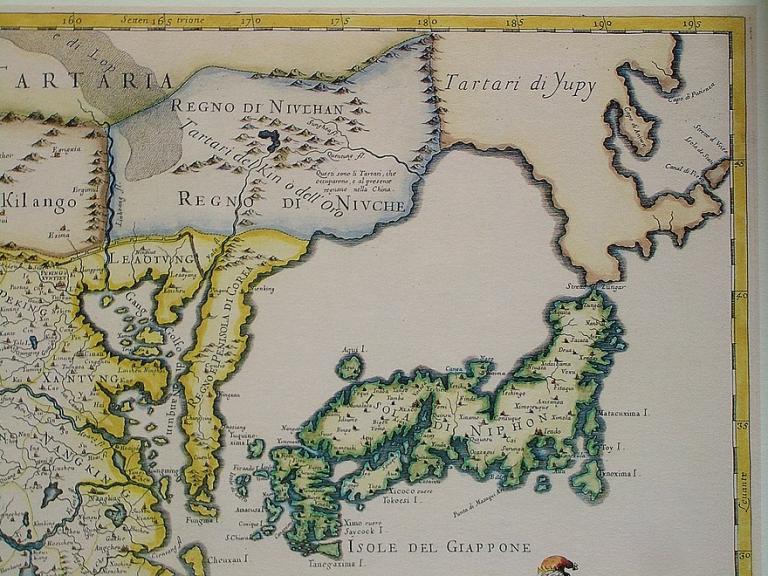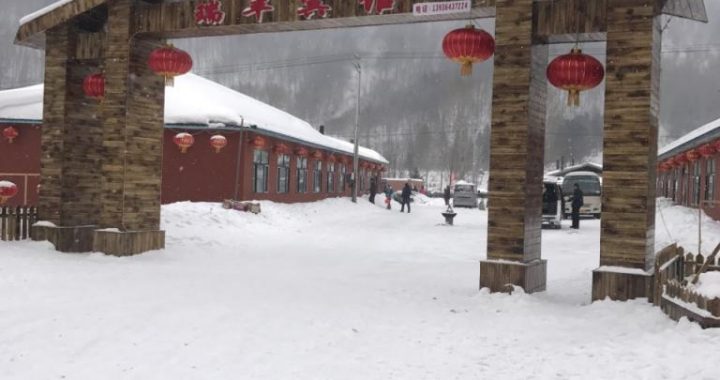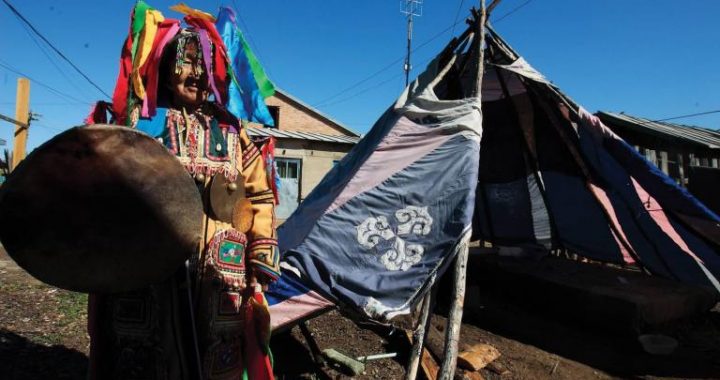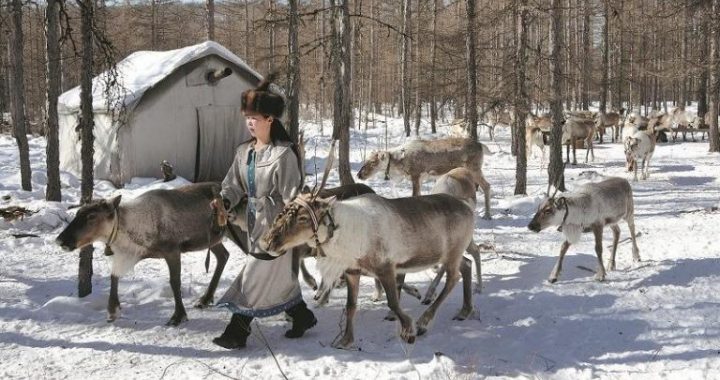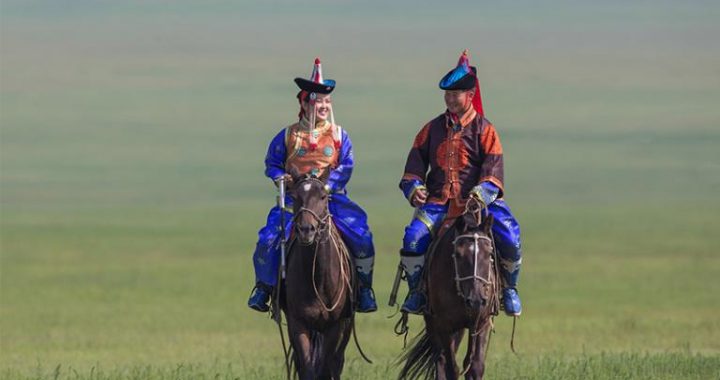Fishermen on the Ussuri River in Hezhen
4 min readIn the lower reaches of the Heilongjiang, Songhua and Wusuli rivers live an ancient fishing and hunting ethnic minority, the Hezhen people. Hezhen means two things, people in the east and people living on riverside. Today, the Hezhen people, about 4,000, live in Heilongjiang Province.
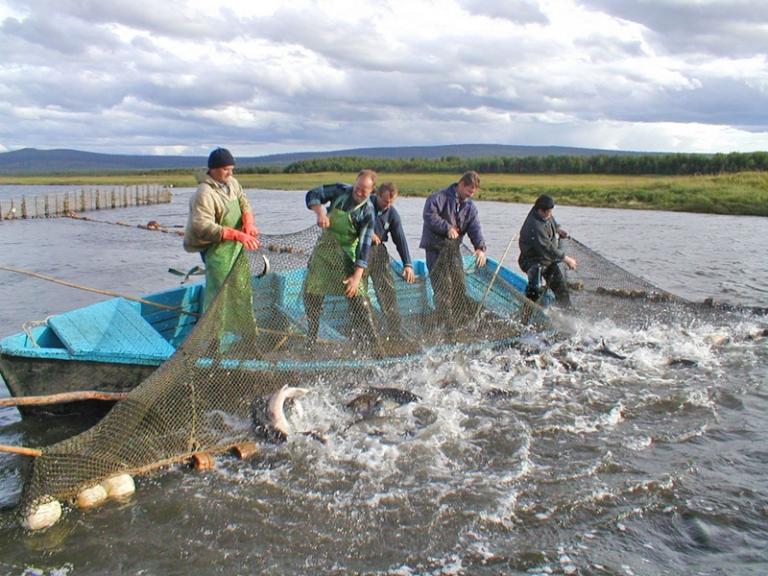
In this area, mountains are tall and forests deep, rivers and lakes abundant; all provide favorable conditions for fishing and hunting. Up to and including the present, the Hezhen people living on river-banks make a living by fishing. Almost everyone of them, old and young, men and women, are good fishers with skills inherited from their ancestors. Their simple tools are no more than forks, hooks and nets. The forks they fling never miss their targets. Their fishing skill on a frozen river is incredible; by just cutting a hole in the ice, they are ready to harvest not only fish but also much joy. In spring, they hunt for all kinds of fish. In summer, they repair fishing tools to get ready for autumn,a month-longgolden harvest season. During this season, they fish dog salmon and sturgeon to their heart’s content In winter, they cut a hole to net fish on the frozen river. Fish permeates every part of their life. In the past, the Hezhen people calculated their ages by the number of times they had eaten dog salmon. Fish is also important to children, whose traditional game is to imitate fishermen “forking”fish.
The Hezhen people are excellent at cooking fish and baking or frying is traditional. They also have a unique practice when they receive guests: they fork up fish with a knife and present it to a guest’s mouth. If the guest does not hesitate to take it, he is considered a genuine friend and will be received warmly. Otherwise, he is simply refused entry into the house. Eating fish raw is also their custom. Raw fish meat is often served for guests or relatives, along with shredded potatoes, Chinese chives, pepper, vinegar and salt after being rinsed in boiling water.
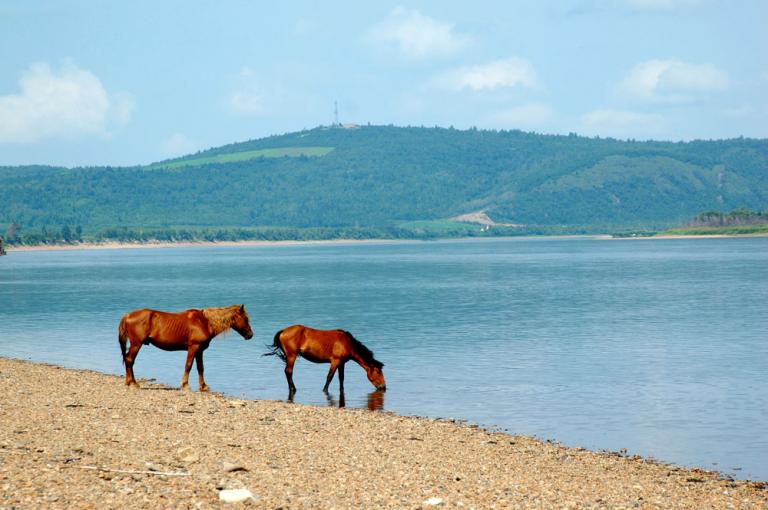
Fish is not only their food, but, along with wild animals on land, their clothing material. The Hezhen men wear robes of roe deer hide, with two lines of fish-bone buttons on the front. The Hezhenwomen wear long robes of fish skin or deer hide, in a fashion similar to the Mandarin cheongsam. Men and women wear fish-skin boots that are well-suited for hunting or fishing. Making fish-skin clothes is not easy. First, the fish is skinned, then punched and kneaded repeatedly until it becomes very soft then it is dyed with wild flowers of different colors. Even the thread for sewing is made from fish skin.Fish-skin clothes keep the wearer warm, and are very durable, waterproof and attractive.
The Hezhen people can never do without water and fish. They seldom leave rivers for other places.For hunting, fishing or meeting people in other villages, they use boats as transportation. Their boats are singular, made by themselves from birch bark, some for travelling and some for shipping goods.Those for traveling are very light and can be easily portaged to another river. The travelling boats can not carry many goods, as they are only suitable for one or two persons to travel quickly or to hunt on water. Meanwhile, boats for carrying things, very popular during the 17th century, have a large capac-ity, with a pinewood keel covered by birch bark. It takes 1 5 persons to row the boat for shipping ona longer voyage.
In Northeast China, where the Hezhen people live, winter is long, icy and snowy. Dog sleds are ideal land transportation. Like boats, their sleds’ function falls into two categories: those used for shipping are larger, while those for hunting, smaller. At least two, and more likely seven, eight or even a dozen dogs do the pulling. The main rope for pulling is for the head dog, and the other ropes for the rest of the pack, all looped around their necks. The head dog must be trained for his job. Dog sleds can travel smoothly on snowy land or on a frozen river. To travel in a snowy forest, dogs have to wear special shoes to protect them from injury.A dog can pull 40 kilograms of weight; over a dozen of them easily move half a ton. Dog sleds, as the favorite transportation of the Hezhen people in winter, can travel quickly and are capable of covering 100 kilometers a day. Today, dog sleds have a new role: tourists love to ride in them.
The simple, hard-working Hezhen people love music. Everyone can sing, accompanied by their traditional kong kang ji,a mouth organ. Songs about their dog sleds and boats express their love of the homeland, memories of the past and longing for a happy future.
